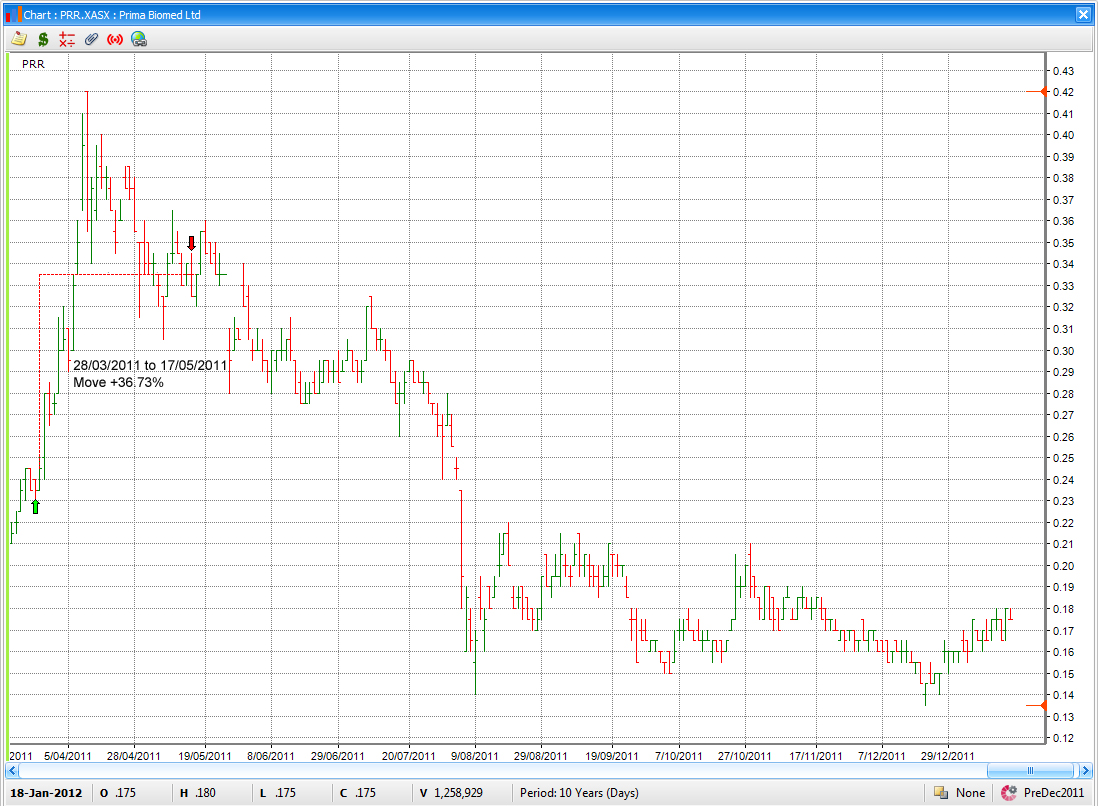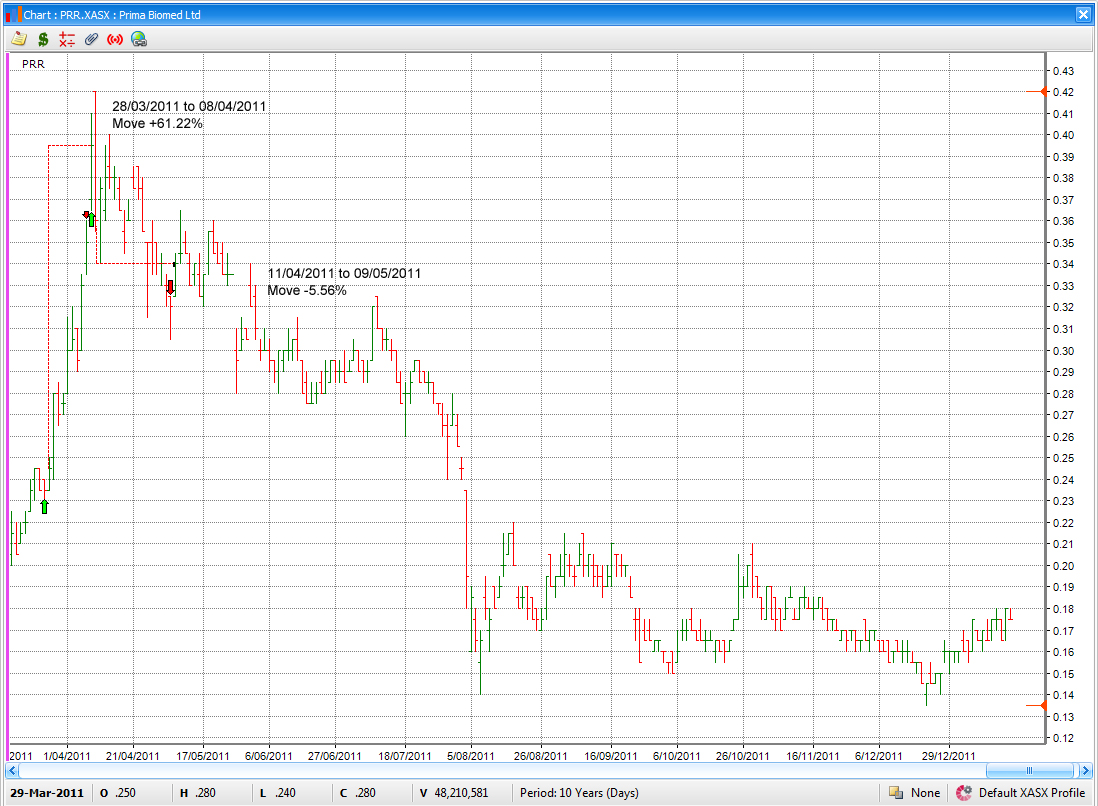 | From the Share Wealth Systems R&D Team |
_
The core concept that changed everything!
This latest round of SPA3 research has been a real eye opener for me. As investors we are taught that we need to cut the losing trades from our portfolios and let our profit trades run. After all, this is the very essence of a trend follower. Isn’t it?
For decades, books and educators have been teaching investors that a position should not be exited before the trend is deemed to have come to an end in the timeframe being traded (I too was one of these educators). However, through this research I was able to conclude that the age old adage of cutting your losses short and letting your profits run simply is not the optimum way to trade all market conditions.
Since October 2009 the ASX All Ordinaries has moved in a number of large and volatile sideways patterns. Whilst sideways markets have been experienced in the past, there has not been such a sustained and wide ranging market in Australia since the All Ordinaries has been tracked on the combined ASX board starting just over 30 years ago. The problem of a sustained and wide range trading market is that the very definition of letting the profit trades run means that the trade remains open until the trend is confirmed over. This is trend following. In a volatile and ranging market this confirmation is often delayed and any open trade profits are regularly eradicated. This is called whip sawing and is detrimental to trend following approaches.
So what’s the big change? The simple introduction of a profit stop attached to the volatility of the trade helps to lock in profits as the trade rises. It also reduces the overall portfolio risk and the exposure to end of trade drawdown.
Here is an example of how a Profit Stop can improve trading results. Assume a $10,000 position was placed in the trade below. The trade was opened the following day after the green entry signal and closed the following day of the red exit signal. The total move captured would have resulted in a 36.73% Profit or $3673 excluding brokerage.
Chart 1: No Profit Stop

The chart below has the Profit Stop set at the appropriate level for this volatility trade but now there are two trades rather than one. The first trade, again assume a $10,000 trade, had a 61.22% move which equates to $6,122 profit. The second trade, also a $10,000 trade has a -5.56% move which is a $556 loss. The net profit between the two trades in the example below is a $5,566 Profit.
Chart 2: Profit Stop

The difference between the two examples is an 18.93% or $1,893 Profit in favour of the Profit Stop.
Now, pay very careful attention to what I’m about to tell you here because if you understand this, you’ll truly see the power of the Profit Stop. The examples above clearly highlight the effectiveness of the Profit Stop’s ability to lock profits into a rising trend. But it doesn’t end there. The Profit Stop also helps control trade risk.
There is a distinct difference between open trade profit which sits in the market unrealised and what I call collateral which includes realised profits. As positions rise, the risk to the position size increases and if end of trade drawdown occurs, it happens on the entire position size including the unrealised profit. The key to understanding this point is that the Profit Stop helps remove open trade profit and resets a new entry with a new position size. So the retracement or end of trade drawdown occurs on a smaller position size, being the newly opened position.
Looking at the chart above (Chart 1) and assuming a $10,000 position, the stock hit a high of .42₵ or an unrealised amount of $17,142. When the position retraced from the high, the percentage fall was 20.24% and this occurred on the entire $17,142. This is in contrast to the Profit Stop (Chart 2). Assume the first trade had a $10,000 position size like the example above, the Profit Stop was triggered for a $6,122 profit and $16,122 was removed from the market. Assume the re-entry was a reset $10,000 position size. From an entry of .36₵, the trade would be exited for a 5.56% loss or -$556. The point being that the end of trade drawdown happened on a much smaller amount. Whilst the example highlights the difference on a single trade, imagine the effect this principle can have on an entire portfolio over many trades over many years. The principle not only decreases trade risk but also portfolio risk.
Sounds simple doesn’t it? Well, it is simple. It’s also obvious too – but only in hindsight and only when brought to one’s attention. I have explained this new principle of “Cut your losses and cut your end of trade drawdown” to both customers and non customers at recent events and the concept resonates with most.
If the Profit Stop challenges your current beliefs, then hang in there. We’re getting to a point where we will show you the outcomes both statistically and with portfolio equity curves. As they say, the proof is in the pudding.
If you are interested in learning more about the groundbreaking Research and how the SPA3 system can help your investing – Register for an obligation free demonstration



This particular issue was the head of our wish list – good to see our inchoate gut feel vindicated by this research
You are optimising the system based on the past two years of volatile sideways price movement. I would like to see you optimise the current system parameters for the next two years.
Response to Comment by Peter:
We have actually optimised (manually not automatically) the system on equities data that dates back to 1983 but have given more credence to equities data since 1991 (because the data is adjusted since then and we use a delisted database of stocks that were listed back then but have been delisted over the sample period).
When we have the next 2 years of data we will rerun the research as we have done many times over the years in the past.
Regards
Gary